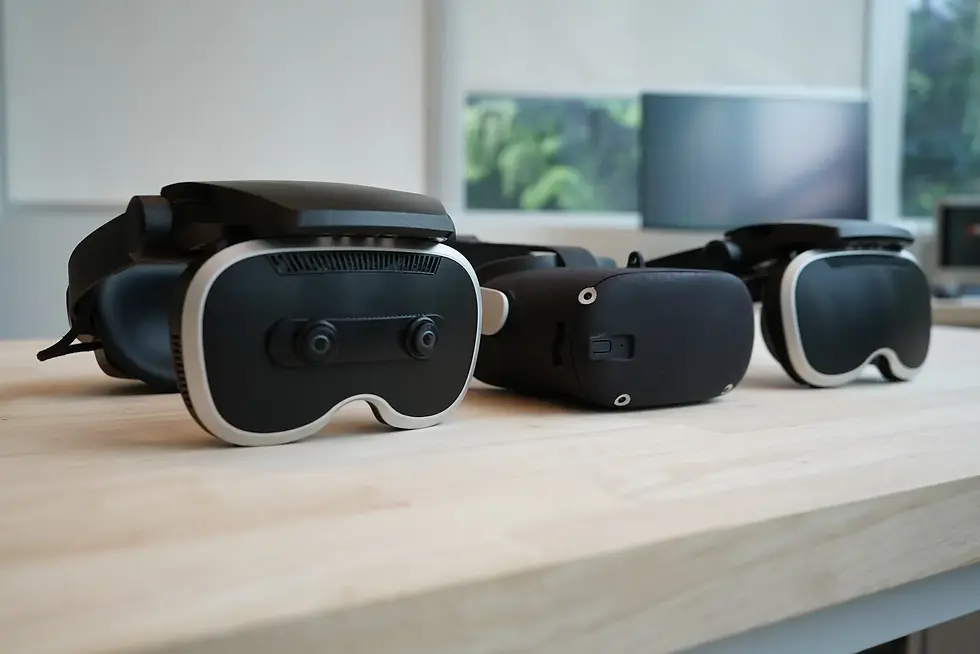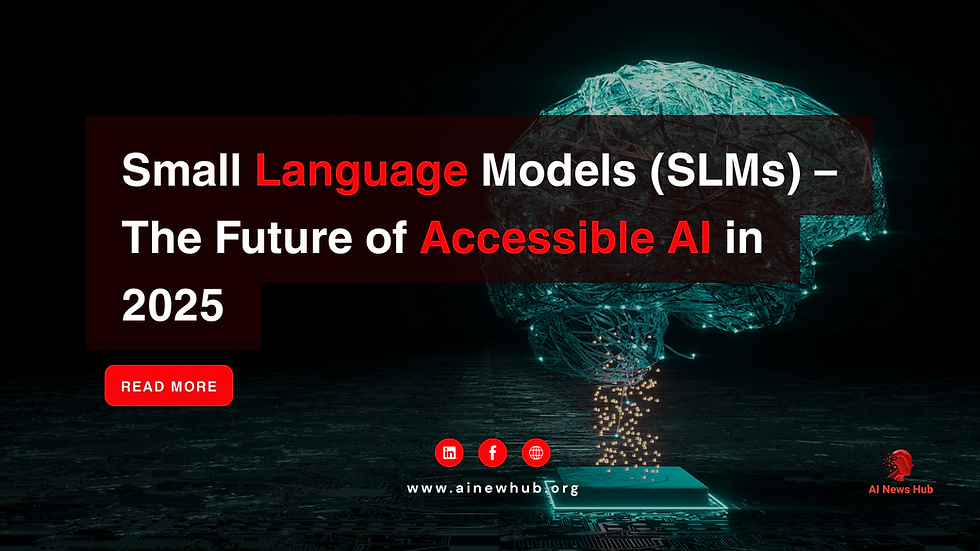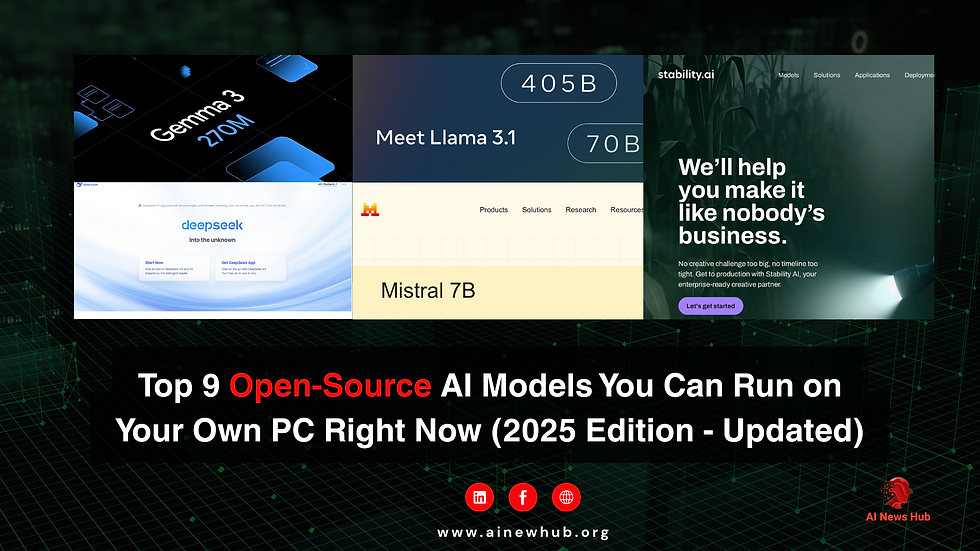Meta's New VR Prototypes: A Tale of Two Futures for the Metaverse
- Talha A.
- Aug 18
- 5 min read

VANCOUVER, B.C. – This week at SIGGRAPH 2025, Meta's Reality Labs isn't just showing off new hardware; it's revealing its strategic roadmap for the future of virtual and mixed reality. By unveiling two radically different research prototypes—Tiramisu and Boba 3—Meta is demonstrating a two-pronged attack on the challenges of immersion, pushing the entire industry closer to the long-sought-after "visual Turing test," where the virtual world becomes indistinguishable from the real one.
Our Take on Meta VR Prototypes: The Two Paths to Reality
This announcement showcases two distinct philosophies. Tiramisu represents the "quality-first" path, a brute-force attempt to achieve perfect, hyper-realistic visual fidelity, even if it comes at the cost of everything else. In contrast, Boba 3 embodies the "immersion-first" path, prioritizing a vast, human-like field of view to eliminate the sense of looking through goggles.
So, which is more important? A flawless but narrow window into a virtual world, or a complete, wrap-around view that's slightly less sharp? For the near future of consumer VR, our analysis points to the Boba 3 approach. While Tiramisu's specs are awe-inspiring, the demand for a wider field of view has been a consistent request from the VR community for years. Boba 3 proves it's possible without sacrificing too much, making its innovations the more likely to influence the next generation of consumer headsets.
Tiramisu: A "Time Machine" to Hyperrealistic VR

Codenamed Tiramisu, this prototype is a research headset built with one singular mission: to achieve the most realistic image quality possible. It's a benchmark for what VR could look like years from now.
Its specifications are staggering compared to today’s devices:
Resolution: An incredible 90 pixels per degree (PPD), 3.6 times sharper than the Meta Quest 3.
Brightness: Up to 1,400 nits, making it 14 times brighter than a Quest 3 and comparable to high-end HDR TVs.
Contrast: Roughly 3 times the contrast of Quest 3, delivering deeper blacks and more vibrant colors.
This leap is achieved using dual µOLED displays and custom glass lenses. However, this "time machine" comes with trade-offs. The headset is significantly bulkier, and the field of view is limited to a narrow 33° x 33°. Douglas Lanman, a director at Reality Labs, calls it "the most realistic VR image I’ve seen yet," a sentiment that highlights its purpose as a research benchmark, not a product preview.
Boba 3: Bringing the Human Field of View to VR

While Tiramisu focuses on pixel density, the Boba 3 prototype tackles immersion by expanding the field of view (FOV) to an incredible 180° horizontal and 120° vertical. This covers approximately 90% of the human visual system, a monumental leap from the ~46% covered by Quest 3.
Unlike Tiramisu, Boba 3 is built with near-consumer technologies, including advanced pancake lenses and 4K-per-eye displays. The VR-only version weighs just 660 grams, making it lighter than a Quest 3 with an Elite strap. While it still requires a top-tier PC, Boba 3 proves that an ultra-wide, immersive experience is no longer a distant dream.
Comparison: Where the Prototypes Stand
To put these advancements in context, here’s how the prototypes compare to current leading consumer headsets:
Feature | Meta Quest 3 (Today) | Boba 3 Prototype | Tiramisu Prototype | Apple Vision Pro (Competitor) |
Resolution | ~25 PPD | ~30 PPD | ~90 PPD | ~34 PPD |
Field of View (Hor.) | ~110° | ~180° | ~33° | ~100° |
Tethering | Standalone / PC VR | PC VR Required | PC VR Required | Standalone / Mac |
Form Factor | Consumer-Ready | Bulky but Wearable | Lab Prototype | Consumer-Ready |
This table makes it clear: each prototype is a world-leader in a specific metric, but neither is a complete consumer product on its own.
What This Means for the VR Industry
These Meta VR prototypes are a public challenge to competitors like Apple, Sony, and Valve. Meta is effectively publishing its R&D roadmap, forcing the rest of the industry to keep pace. For consumers, this charts a tangible path forward: a future "Oculus Quest 4" might one day combine Tiramisu's resolution with Boba 3's FOV in a standalone device. In a time of skepticism, this is Meta's tangible proof that its massive investment in the metaverse is yielding hardware that could finally make the concept compelling.
The AI Connection: The Brains Behind the Eyes
For AI News Hub, the most critical story is how artificial intelligence makes these breakthroughs possible.
AI-Powered Rendering: Tiramisu's stunning resolution would be impossible to render with brute force. It relies on AI-powered upscaling like NVIDIA's DLSS 3 to predict pixels and dramatically reduce the computational load, proving that the future of graphics is smarter, not just stronger, hardware.
Generative AI Worlds: A headset like Boba 3 with a 180° FOV is the perfect canvas for generative AI. Imagine using voice commands to create entire, immersive worlds that fill your entire vision. This technology makes AI creation tools infinitely more powerful.
Smarter Mixed Reality: A wider FOV and better displays are a boon for mixed reality. Advanced AI is essential for scanning and understanding a user's real-world environment in real-time to realistically blend virtual objects, making experiences far more believable.
The AI Turing Test: Meta's goal of a "visual Turing test" for displays will converge with the development of AI-driven avatars and NPCs. When you can no longer tell if the virtual human you're talking to is real or AI, in a world that looks photorealistic, the metaverse becomes a fundamentally different and more powerful platform.
In conclusion, while Tiramisu and Boba 3 won't be on store shelves anytime soon, they are far more than just lab experiments. They are AI-powered milestones on a clear path toward a future where the boundary between the physical and virtual worlds continues to blur, solidifying Meta's long-term—and very real—vision. Frequently Asked Questions (FAQs)
What are Meta's new prototypes, Tiramisu and Boba 3?
Tiramisu is a research prototype focused on achieving hyper-realistic visual quality with an extremely high resolution (90 PPD), but in a narrow field of view. Boba 3 is a prototype focused on creating total immersion with an ultra-wide, 180° field of view that is much closer to human vision.
What is the main difference between them?
The core difference is their design philosophy. Tiramisu prioritizes visual quality (realism) in a small window, sacrificing field of view. Boba 3 prioritizes immersion (field of view), sacrificing some pixel density to eliminate the "goggles" effect.
Is Boba 3 going to be the Meta Quest 4?
No. Both Tiramisu and Boba 3 are research prototypes, not consumer products. They are built to test technologies that might appear in future headsets like a potential Quest 5 or beyond, but they are not the Quest 4.
How does AI play a role in these new VR headsets?
AI is crucial. For hyper-realistic displays like Tiramisu, AI-powered rendering (like NVIDIA DLSS 3) is needed to handle the immense processing load. AI will also be essential for creating immersive generative worlds in wide-FOV headsets and for developing smarter Mixed Reality that can understand and interact with the real world.
How much better is Boba 3's field of view than a Quest 3?
Boba 3 has a massive 180° horizontal field of view, covering about 90% of what the human eye can see. This is a huge leap in immersion compared to the Meta Quest 3, which has a field of view of about 110°.






Comments